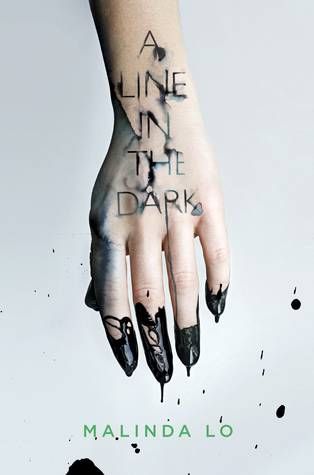
The Elusive L Word
Bee Oder is on her way to working full time in libraries, after a while working full time in schools. She decided to change because there wasn’t enough time spent talking about books. She has degrees in Creative Writing and Teaching, and is on her way to securing a Masters in Information Management. Born and raised in Melbourne, Australia, Bee has spent time living in the U.S. and the UK before settling back home—she finds that Melbourne has the best weather for reading and writing, as well as the best bookstores. You can find her taking photos of LGBT+ books on Instagram @lesbeebooks or else co-running the tumblr-based digital zine, The Butchery.
I made a reading resolution at the start of the year: read more lesbians. It’s actually a more elusive prompt than it seems—I’m really only taking what I can get. What I really mean by “read more lesbians” is “actively seek out books by, about, or including women-loving-women.”
This resolution came a little late. I overshot the New Year’s deadline by a few months. The actual igniting spark was my first New Year goal, which was to read more and keep myself on track with a Bookstagram account. I started the account, picked a theme, and posted some photos. In trying to stick to my agenda of LGBT+ books (again: by, about, including), I realised that most of what was in my bookshelf was focused on gay, bisexual, pansexual, or queer men. Elsewhere, writers have commented that Sarah Waters is the anomaly of lesbian fiction, having broken the mainstream and become a bestseller and prize-winner. It is perhaps ironic that she held a similarly lone place on my shelves.
I scolded myself and decided that the jig was up. If I was going to make 2018 the true twenty-gay-teen of Hayley Kiyoko’s dreams, I would have to be more active and conscious about reading lesbians. Wide though that net was, finding the fish proved a challenge.
A lot of searching and tag-mining later, I was armed with a list from which to inject lesbian goodness into my book collection. But I had also noticed something that worried me a little. In popular lists, on popular Bookstagram accounts, all over the reaches of tumblr-based fandom, there was a definite lean towards M/M fiction. There seemed to be some kind of disconnect there: people studying and analysing fandom demographics have claimed time and again that fandoms are largely made up of women—and a majority lesbian, bisexual, pansexual, and queer women at that. Regardless of this demographic, everywhere I turned there was The Song of Achilles, Aristotle and Dante, The Raven Cycle. Even The Secret History. Book after book, and fandom after fandom, all clamouring for M/M couples.
The question of why this happens is so obvious it probably doesn’t bear asking. I asked it anyway.
Querying my meagre group of WLW tumblr followers about their preference for M/M fiction actually garnered more responses than I was expecting. The answers were more than I was expecting, too. The general reasons given were:
- the drawcard of representation (being gay and wanting to read/watch gay things);
- the basic fact of there being more MLM content out there (which we can see pretty straight up from something like the GLAAD Where Are We On TV report—55% of regular/recurring LGBT+ characters on primetime TV are cis men);
- MLM ships are more popular in fandom spaces (just at a quick glance, 291,181 results for F/F on AO3 as opposed to 1,786,633 for M/M), so are easier to find and jump on board;
- male characters being more developed/dimensional in source media, and therefore being easier to connect with;
- hypersexualisation of WLW in source media, and the male gaze.
It all made me a little sad. While internalised lesbophobia is very real, and very difficult to overcome, it still didn’t make up the most responses. Overwhelmingly, the most frequent reply was that they didn’t read F/F fiction because they thought it didn’t exist—or if it did, that it was badly done.
I couldn’t believe how wrong these responders were. I kind of wanted to climb on top of a building, megaphone in hand, and yell, “the truth is out there! Good lesbian content exists! It’s waiting for you to find it!”
I’ve settled for making as many tumblr and Instagram posts as I can about those lesbian books—by, about, including. While it’s not garnering the same love in fandom spaces as my old M/M content, it is still somehow more satisfying. Satisfying, too, is my constant searching, and every new F/F book that I come across, which is just waiting for me to read it. The search is satisfying because, frankly speaking, it can be hard.
People more entrenched in publishing than I have noticed this same trend, and have investigated the root of the imbalance. One such lesbian detective is author Malinda Lo, who frequently speaks about why finding F/F books is so difficult. “It’s becoming ever more clear to me that many books with queer female characters are published with little to no marketing around queerness,” she wrote on Twitter recently, indicating that the fandom blindness surrounding F/F fiction is maybe more of a systemic problem within the publishing industry itself. With internet access, finding anything can be possible. But with single-string search engines (cough Google cough) and the immediacy of microblogging platforms, society’s information-seeking behaviour has changed. At the risk of sounding like a baby boomer writing a think-piece on ‘young people today’, we have genuinely come to expect that information will be laid out in front of us with efficiency and ease of understanding. Unfortunately, when F/F fiction is considered a niche market, any marketing below the level of what Simon vs. the Homo Sapiens Agenda has gotten is frankly not enough. To put it plainly, if the assumption is going to be that no one will read F/F fiction…then no one will read F/F fiction.
So far in this article, I have named five whole books featuring MLM characters. Here are ten featuring WLW, to even it out:
A Line in the Dark by Malinda Lo
- As I Descended by Robin Talley
- Georgia Peaches and Other Forbidden Fruit by Jaye Robin Brown
- The Gilda Stories by Jewelle Gomez
- Juliet Takes a Breath by Gabby Rivera
- The Miseducation of Cameron Post by Emily M. Danforth
- The Night Watch by Sarah Waters
- Under the Udala Trees by Chinelo Okparanta
- We Are Okay by Nina LaCour
- The World Unseen by Shamim Sarif
And there are plenty more where they came from. All you need to do is find them.


















